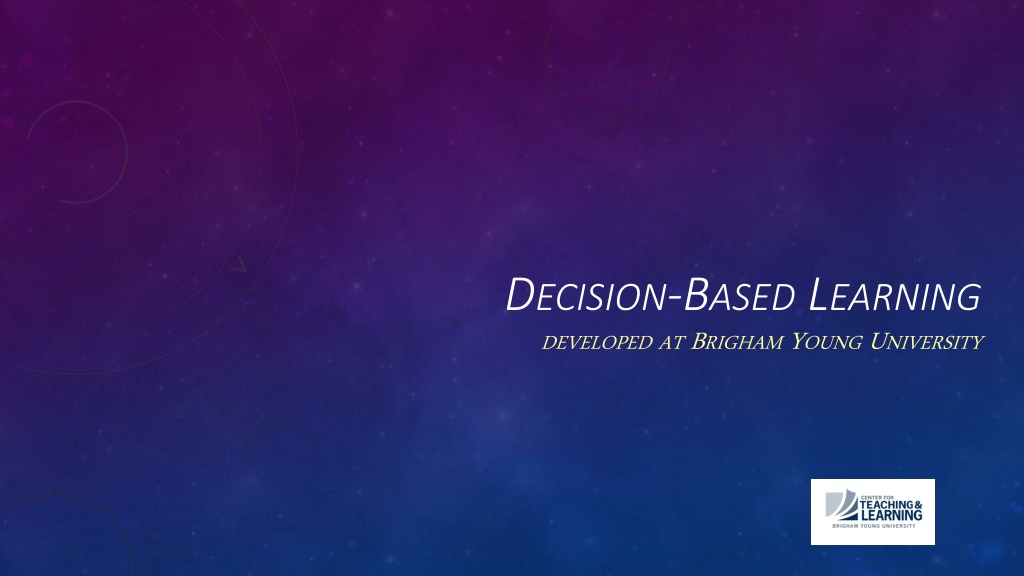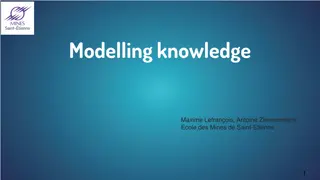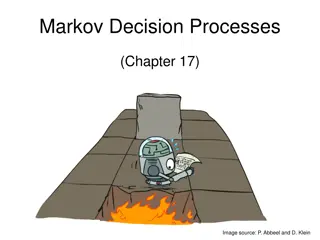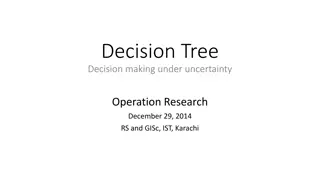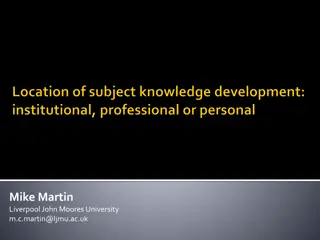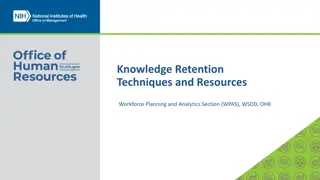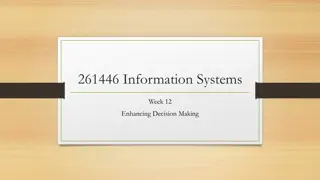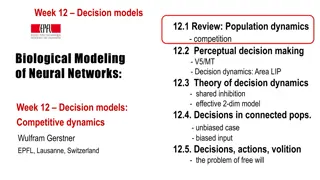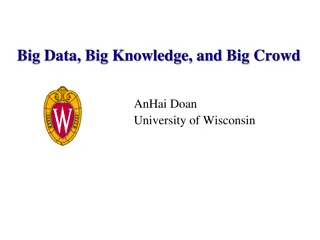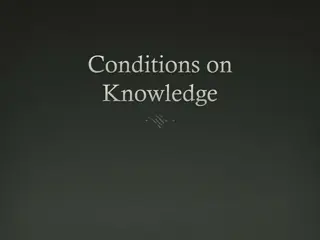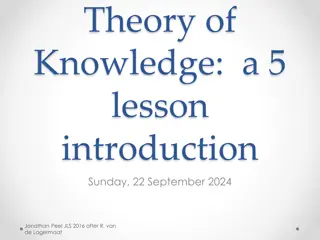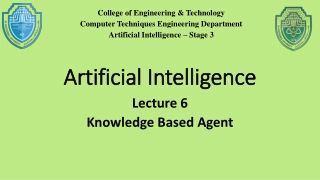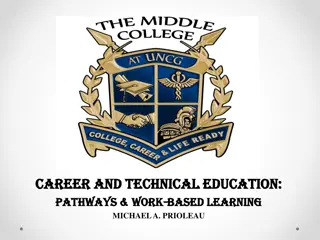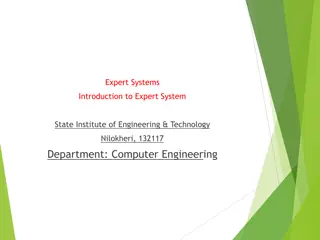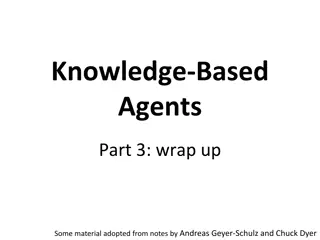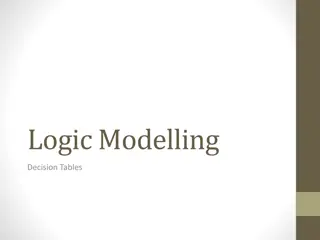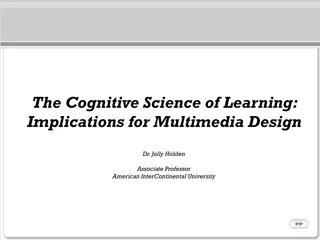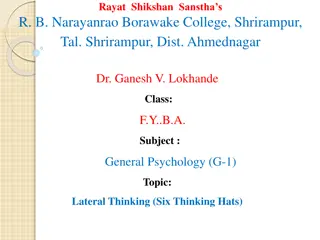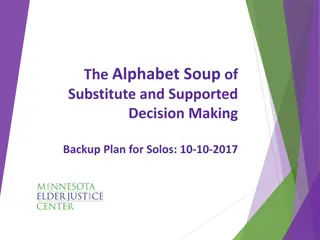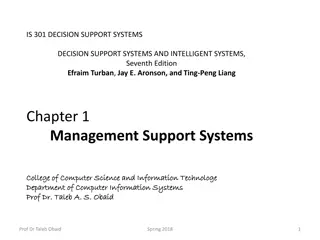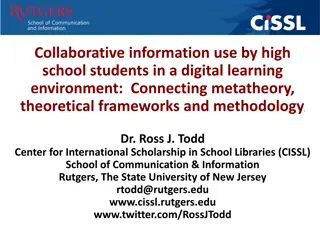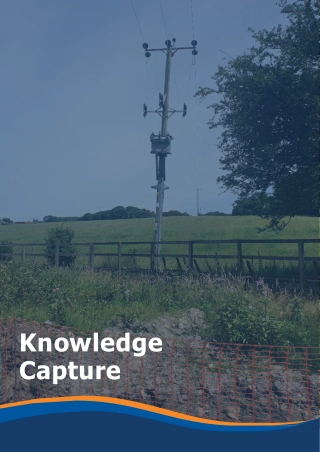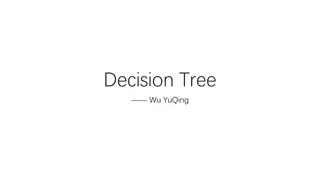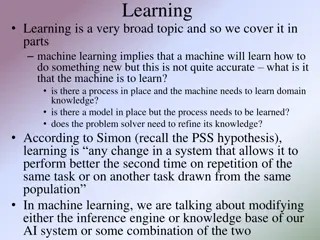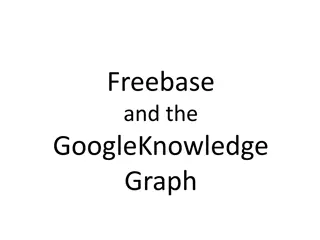Exploring Decision-Based Learning and Knowledge Types
Decision-based Learning is an innovative approach where students learn through solving real-world problems and making interconnected decisions. This method helps in internalizing decision maps and understanding various types of knowledge like conceptual, procedural, and conditional. Conditional knowledge, a lesser-known type, is optimally developed through Problem-Based Learning.
Download Presentation

Please find below an Image/Link to download the presentation.
The content on the website is provided AS IS for your information and personal use only. It may not be sold, licensed, or shared on other websites without obtaining consent from the author. Download presentation by click this link. If you encounter any issues during the download, it is possible that the publisher has removed the file from their server.
E N D
Presentation Transcript
DECISION-BASED LEARNING DEVELOPED AT BRIGHAM YOUNG UNIVERSITY
WHAT IS DECISION-BASED LEARNING? Decision-based Learning is an approach to teaching and learning where students learn concepts and procedures of a discipline as they are introduced to a series of decisions experts make to solve real-world problems. These decisions are interconnected forming a decision map. Students practice using the decision map as they solve hundreds of problems until they internalize the map. They are taught the concepts and procedures necessary to making each decision along the way.
MANY TYPES OF KNOWLEDGE Affective Knowledge Automated Knowledge Conceptual Knowledge Semantic Knowledge Domain Knowledge Empirical Knowledge Episodic Knowledge Explicit Knowledge Functional Knowledge Procedural Knowledge Narrative Knowledge Prior Knowledge Metacognitive Knowledge Propositional Knowledge Psychomotor Knowledge Rationale Knowledge Conditional Knowledge Situational Knowledge Social Knowledge Strategic Knowledge Tacit Knowledge
MANY TYPES OF KNOWLEDGE Conceptual Knowledge Procedural Knowledge Conditional Knowledge Knowledge Types targeted with Decision-Based Learning
1. Conceptual Knowledge The What and Why 2. Procedural Knowledge The How to
THREEKNOWLEDGETYPES 1. Conceptual Knowledge The What and Why 2. Procedural Knowledge The How to 3. Conditional Knowledge The When and Under what conditions Other names for conditional knowledge Functional, Reasoning, & Qualitative Knowledge
AN EXAMPLEOF CONDITIONAL KNOWLEDGEIN OPERATION Note conditional knowledge is optimally developed with a Problem-Based Learning approach
Basic Statistics Problem You have been asked to determine if older drivers drive on average faster than younger drivers. Decide if the problem is inferential or descriptive in nature Just in time/Just Enough Instruction Inferential Descriptive And make their choice Students See key word(s) And make their choice Decide if the problem deals with difference, relationship, independence, or goodness of Fit Just in time/Just Enough Instruction Samples: Older 33, Younger 38 Distributions: Both Skewed Students See key word(s) Students See key word(s) Relationships Students See key word(s) Difference Goodness of Fit Independence And make their choice And make their choice Decide if a parametric or a non-parametric method should be used Just in time/Just Enough Instruction Students See key word(s) Parametric Non-parametric And make their choice Decide if one or two or more dependent variables are present Just in time/Just Enough Instruction Students See key word(s) And make their choice 1 Dependent Variable 2+ Dependent Variables Decide if zero, one, or two or more independent variables are present Just in time/Just 1 Independent Variables Enough Instruction 0 Independent Variables 2+ Independent Variables Decide if two, or three or more levels are present Just in time/Just Enough Instruction 2 levels 3+ levels Independent Samples t-test One-Way ANOVA Factorial ANOVA
Basic Statistics Problem You have been asked to determine if older drivers drive on average faster than younger drivers. Decide if the problem is inferential or descriptive in nature Inferential Descriptive Decide if the problem deals with difference, relationship, independence, or goodness of Fit Samples: Older 33, Younger 38 Distributions: Both Skewed Relationships Difference Goodness of Fit Independence Decide if a parametric or a non-parametric method should be used Parametric Non-parametric Decide if one or two or more dependent variables are present 1 Dependent Variable 2+ Dependent Variables Decide if zero, one, or two or more independent variables are present 1 Independent Variables 0 Independent Variables 2+ Independent Variables Decide if two, or three or more levels are present 2 levels 3+ levels Independent Samples t-test One-Way ANOVA Factorial ANOVA
Basic Statistics Problem You have been asked to determine who drives faster on average younger, middle age, or senior citizens. Decide if the problem is inferential or descriptive in nature Inferential Descriptive Decide if the problem deals with difference, relationship, independence, or goodness of Fit Samples: young 33, mid 38, sen 43 Distributions: All normal Relationships Difference Goodness of Fit Independence Decide if a parametric or a non-parametric method should be used Parametric Non-parametric Decide if one or two or more dependent variables are present 1 Dependent Variable 2+ Dependent Variables Decide if zero, one, or two or more independent variables are present 1 Independent Variables 0 Independent Variables 2+ Independent Variables Decide if two, or three or more levels are present 2 levels 3+ levels Independent Samples t-test t-test Independent Samples One-Way ANOVA Factorial ANOVA
Basic Statistics Problem You have been asked to determine who drives faster on average younger or older drivers. Determine also if car type (new or old) has an effect on driving speed. Decide if the problem is inferential or descriptive in nature Inferential Descriptive Decide if the problem deals with difference, relationship, independence, or goodness of Fit Samples: Younger / new car = 34 Younger / old car = 55 Older / new car = 23 Older / old car = 32 Distributions: All normal Relationships Difference Goodness of Fit Independence Decide if a parametric or a non-parametric method should be used Parametric Non-parametric Decide if one or two or more dependent variables are present 1 Dependent Variable 2+ Dependent Variables Decide if zero, one, or two or more independent variables are present 1 Independent Variables 0 Independent Variables 2+ Independent Variables Decide if two, or three or more levels are present 2 levels 3+ levels Independent Samples t-test t-test Independent Samples One-Way ANOVA Factorial ANOVA
ITSNOTJUSTFORSTATISTICS, BUTFOROTHERDISCIPLINESLIKE THE ARTS
Decide what philosophical movement is evident in this piece of art Just in time/Just Enough Instruction Romanticism Realism Post-Modernism Vanguardism Decide what romantic themes are evident Just in time/Just Enough Instruction Power Liberty Individuality Democracy Decide how that power is depicted Just in time/Just Enough Instruction Allegorically Other Metaphorically Describe this art to a layperson using relevant concepts you ve learned
IN TERMSOF SEQUENCEWE TEACH CONDITIONAL KNOWLEDGE FIRST USINGA PROBLEM BASED APPROACH
ONCE STUDENTS MASTERTHE EXPERT DECISION MODEL THEY ARETHENGIVENPROBLEMSTHATREQUIRETHEMTOBOTH BOTH Solve problems using specific methods, techniques, or equations (Procedural Knowledge) Explain their decision-making choices drawing upon deeper concepts (Conceptual Knowledge)
WITH THOUSANDSOF HOURSOF DELIBERATEPRACTICETHESE KNOWLEDGE TYPES BECOME INTERMESHED Conceptu al Knowledge Expert Knowledg e Conditiona l Knowledge Procedural Knowledge
WITH THOUSANDSOF HOURSOF DELIBERATEPRACTICETHESE KNOWLEDGE TYPES BECOME INTERMESHED Conceptu al Knowledge Expert Knowledg e Conditiona l Knowledge Procedural Knowledge
WITH THOUSANDSOF HOURSOF DELIBERATEPRACTICETHESE KNOWLEDGE TYPES BECOME INTERMESHED Conceptu al Knowledge Expert Knowledg e Conditiona l Knowledge Procedural Knowledge
WITH THOUSANDSOF HOURSOF DELIBERATEPRACTICETHESE KNOWLEDGE TYPES BECOME INTERMESHED Conceptu al Knowledge Expert Knowledg e Conditiona l Knowledge Procedural Knowledge
WITH THOUSANDSOF HOURSOF DELIBERATEPRACTICETHESE KNOWLEDGE TYPES BECOME INTERMESHED Expert Knowled ge
STUDENT RESPONSES It doesn't feel like a new or weird approach. The way that everything goes together makes a lot of sense and I like being able to see the big picture from the beginning. I am feeling really confident about my knowledge of the material. It is very helpful for me....I walk away from class excited because I feel like I can actually do/understand what we are learning. I like having practice problems in class, because at first I am stressed, but then we do the practice and I gain feedback and confidence. It has been very helpful. There is a lot of repetition of the concepts that helps me remember them. I have confidence that I could identify the correct tool for the job given a research problem. I think it's very useful and quite practical to be honest. I've taken previous stats classes and it's been easy to understand how to compute the statistics, but I always forget when to apply them. The paradigm shift required to think more conditionally rather than conceptually. Most things in the world aren't presented this way (but they should).
SOFTWARETHATSUPPORTSTHISAPPROACH https://decisionpath.byu.edu/stats/
IFYOUHAVE QUESTIONSORWOULDLIKEMOREINFORMATION Contact Ken Plummer at ken_plummer@byu.edu
